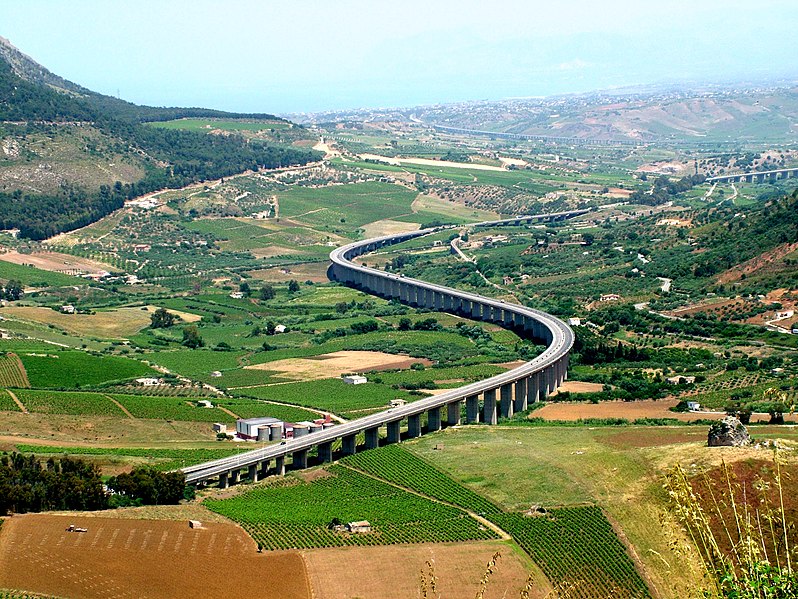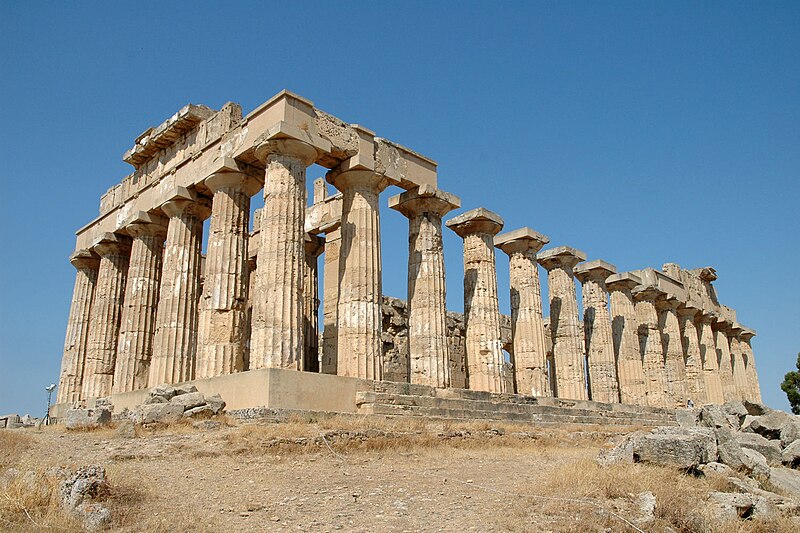 Sicily (Italian and Sicilian: Sicilia, [siˈtʃiːlja]; [sɪˈɕilja]) is the largest island in the Mediterranean Sea. Along with the surrounding minor islands, it constitutes an autonomous region of Italy, the Regione Autonoma Siciliana (Sicilian Autonomous Region)
Sicily (Italian and Sicilian: Sicilia, [siˈtʃiːlja]; [sɪˈɕilja]) is the largest island in the Mediterranean Sea. Along with the surrounding minor islands, it constitutes an autonomous region of Italy, the Regione Autonoma Siciliana (Sicilian Autonomous Region)Sicily has a rich and unique culture, especially with regard to the arts, music, literature, cuisine, architecture and language. The Sicilian economy is diversified. The agriculture sector is significant with citrus fruits (mainly oranges and lemons), olives and olive oil, grapes and wine. Tourism and real estate are economically important for the island. Sicily also holds importance for archeological and ancient sites such as the Necropolis of Pantalica, the Valley of the Temples and Selinunte.
Geography
 Sicily has roughly triangular shape, which earned it the name Trinacria. It is separated to the east from the Italian region of Calabria through the Strait of Messina. The distance between the island and mainland Italy by the Strait of Messina is about 3 kilometers (1.9 mi) wide in the north, and about 16 km (9.9 mi) in the south of the Strait.
Sicily has roughly triangular shape, which earned it the name Trinacria. It is separated to the east from the Italian region of Calabria through the Strait of Messina. The distance between the island and mainland Italy by the Strait of Messina is about 3 kilometers (1.9 mi) wide in the north, and about 16 km (9.9 mi) in the south of the Strait.The terrain of inland Sicily is mostly hilly, and intensively cultivated wherever it was possible. Along the northern coast, mountain ranges of Madonie (2000 m), Nebrodi (1800 m) and Peloritani (1300 m) represent an extension of mainland Appennines. The cone of Mount Etna dominates over the eastern coast. In the south-east lie lower Hyblaean Mountains (1000 m). The mines of the Enna and Caltanissetta district were a leading sulfur-producing area throughout the 19th century, but have declined since the 1950s.
Sicily and its small surrounding islands have highly active volcanoes. Mount Etna, located in the east of mainland Sicily with a height of 3,320 m (10,890 ft), is the tallest active volcano in Europe and one of the most active in the world. The Aeolian Islands in the Tyrrhenian Sea, to the northeast of mainland Sicily, exhibit a volcanic complex including Stromboli. Currently active also are the three dormant volcanoes of Vulcano, Vulcanello and Lipari. Off the southern coast of Sicily, the underwater volcano of Ferdinandea, which is part of the larger Empedocles, last erupted in 1831. It is located between the coast of Agrigento and the island of Pantelleria (which itself is a dormant volcano), on the underwater Phlegraean Fields of the Strait of Sicily.
The autonomous region also contains several neighboring islands: Aegadian Islands, Aeolian Islands, Pantelleria and Lampedusa.

Rivers
The island is drained by several rivers, most of which flow through the central area and enter the sea at the south of the island. The Salso flows through parts of Enna and Caltanissetta before entering the Mediterranean Sea at the port of Licata. To the east, there is the Alcantara in the province of Messina, which exits at Giardini Naxos; and the Simeto which exits into the Ionian Sea south of Catania. Other important rivers on the island are to the southwest with Belice and Platani.
Climate
Sicily has a typical Mediterranean climate with mild and wet winters and hot, dry summers.
According to the Regional Agency for Waste and Water, on 10 August 1999 the weather station of Catenanuova (EN) recorded a maximum temperature of 48.5 °C (119 °F), which is the highest temperature ever recorded in Europe by the use of reliable instruments. The official European record – measured by minimum/maximum thermometers – is recognized to Athens, Greece, as communications reported a maximum of 48.0 °C (118 °F) in 1977

Flora and fauna
Sicily is an often-quoted example of man-made deforestation, which was practiced since Roman times, when the island was made an agricultural region.This gradually dampened the climate, leading to decline of rainfall and drying of rivers. Today, entire central and southwest provinces are practically without any forests. That also affected the island's wild fauna, of which is little left in the pastures and crop fields of the inland.
The Nebrodi Mountains Regional Park, established August 4, 1993, with its 86,000 ha is the largest protected natural area of Sicily, here is the largest forest of Sicily, called forest Caronia, that is also the second name of Nebrodi Mountains. A number of bird species are found in Sicily. In some cases Sicily is a delimited point of a species range. For example, the subspecies of Hooded Crow, Corvus cornix ssp cornix occurs in Sicily, Sardinia and Corsica, but no further south.

The Hundred Horse Chestnut (Castagno dei Cento Cavalli), located on Linguaglossa road in Sant'Alfio, on the eastern slope of Mount Etna is the largest and oldest known chestnut tree in the world, dated between 2000 and 4000 years.
History
 The original inhabitants of Sicily were three defined groups of the Ancient peoples of Italy. The most prominent and by far the earliest of these was the Sicani, who according to Thucydides arrived from the Iberian Peninsula (perhaps Catalonia) Important historical evidence has been discovered in the form of cave drawings by the Sicani, dated from the end of the Pleistocene epoch,
The original inhabitants of Sicily were three defined groups of the Ancient peoples of Italy. The most prominent and by far the earliest of these was the Sicani, who according to Thucydides arrived from the Iberian Peninsula (perhaps Catalonia) Important historical evidence has been discovered in the form of cave drawings by the Sicani, dated from the end of the Pleistocene epoch,
around 8000 BC. The arrival of the first humans is correlated with extinction of dwarf hippos and dwarf elephants. The Elymians, thought to be from the Aegean Sea, were the next tribe to migrate to join the Sicanians on Sicily

Although there is no evidence of any wars between the tribes, when the Elymians settled in the north-west corner of the island, the Sicanians moved across eastwards. From mainland Italy, thought to originally have been Ligures from Liguria, came the Sicels in 1200 BC; forcing the Sicanians to move back across Sicily settling in the middle of the island.Other minor Italic groups who settled in Sicily were the Ausones (Aeolian Islands, Milazzo) and the Morgetes (Morgantina). There are many studies of genetic records which show inhabitants of various parts of the Mediterranean Basin mixed with the oldest inhabitants of Sicily. Among these were Egyptian, Phoenician, and Iberian. The Phoenicians also were early settlers before the Greeks. Palermo is a name of Phoenician origin

Agriculture
he main agricultural products are citrons, oranges, lemons, olives, olive oil, almonds, grapes, Sicilian pistachios and wine; cattle, mules, donkeys, and sheep are raised.
Sicily produces more wine than New Zealand, Austria and Hungary combined, but was previously known mainly for fortified Marsala wines. In recent decades the wine industry has improved, new winemakers are experimenting with less-known native varietals, and Sicilian wines have become better known.[57] The best known local varietal is Nero d'Avola, named for a small town not far from Syracuse; the best wines made with these grapes come from Noto, a famous old city close to Avola.
There are important tuna and sardine fisheries.

No comments:
Post a Comment